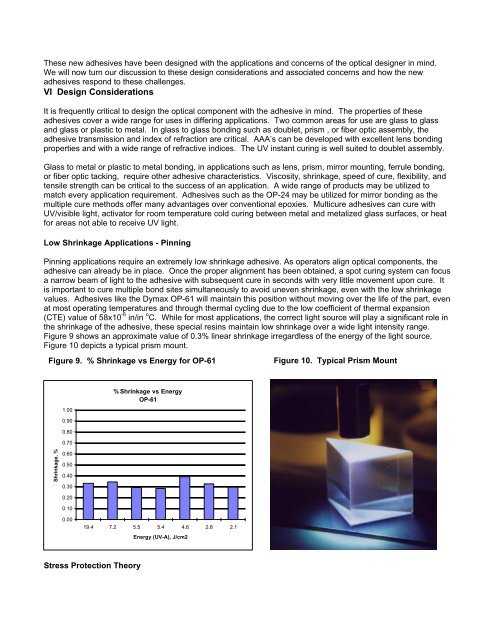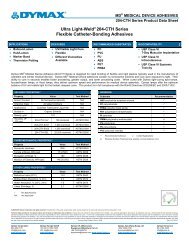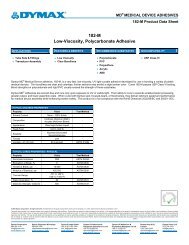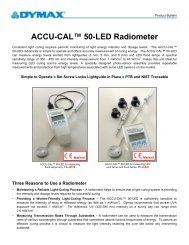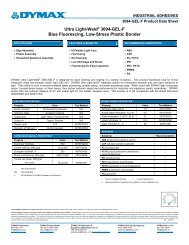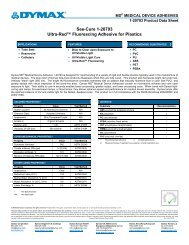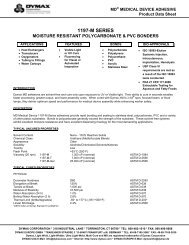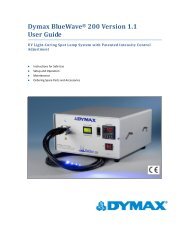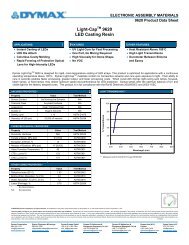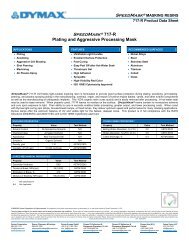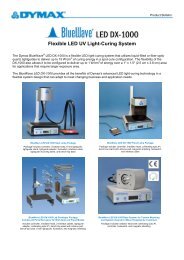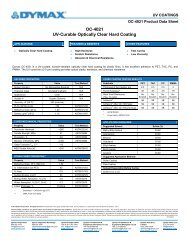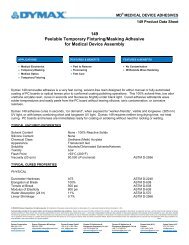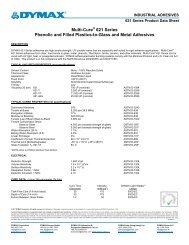Aerobic Adhesives VII – A New High Performance Bonding Option ...
Aerobic Adhesives VII – A New High Performance Bonding Option ...
Aerobic Adhesives VII – A New High Performance Bonding Option ...
You also want an ePaper? Increase the reach of your titles
YUMPU automatically turns print PDFs into web optimized ePapers that Google loves.
These new adhesives have been designed with the applications and concerns of the optical designer in mind.<br />
We will now turn our discussion to these design considerations and associated concerns and how the new<br />
adhesives respond to these challenges.<br />
VI Design Considerations<br />
It is frequently critical to design the optical component with the adhesive in mind. The properties of these<br />
adhesives cover a wide range for uses in differing applications. Two common areas for use are glass to glass<br />
and glass or plastic to metal. In glass to glass bonding such as doublet, prism , or fiber optic assembly, the<br />
adhesive transmission and index of refraction are critical. AAA’s can be developed with excellent lens bonding<br />
properties and with a wide range of refractive indices. The UV instant curing is well suited to doublet assembly.<br />
Glass to metal or plastic to metal bonding, in applications such as lens, prism, mirror mounting, ferrule bonding,<br />
or fiber optic tacking, require other adhesive characteristics. Viscosity, shrinkage, speed of cure, flexibility, and<br />
tensile strength can be critical to the success of an application. A wide range of products may be utilized to<br />
match every application requirement. <strong>Adhesives</strong> such as the OP-24 may be utilized for mirror bonding as the<br />
multiple cure methods offer many advantages over conventional epoxies. Multicure adhesives can cure with<br />
UV/visible light, activator for room temperature cold curing between metal and metalized glass surfaces, or heat<br />
for areas not able to receive UV light.<br />
Low Shrinkage Applications - Pinning<br />
Pinning applications require an extremely low shrinkage adhesive. As operators align optical components, the<br />
adhesive can already be in place. Once the proper alignment has been obtained, a spot curing system can focus<br />
a narrow beam of light to the adhesive with subsequent cure in seconds with very little movement upon cure. It<br />
is important to cure multiple bond sites simultaneously to avoid uneven shrinkage, even with the low shrinkage<br />
values. <strong>Adhesives</strong> like the Dymax OP-61 will maintain this position without moving over the life of the part, even<br />
at most operating temperatures and through thermal cycling due to the low coefficient of thermal expansion<br />
(CTE) value of 58x10 -6 in/in o C. While for most applications, the correct light source will play a significant role in<br />
the shrinkage of the adhesive, these special resins maintain low shrinkage over a wide light intensity range.<br />
Figure 9 shows an approximate value of 0.3% linear shrinkage irregardless of the energy of the light source.<br />
Figure 10 depicts a typical prism mount.<br />
Figure 9. % Shrinkage vs Energy for OP-61<br />
Figure 10. Typical Prism Mount<br />
1.00<br />
% Shrinkage vs Energy<br />
OP-61<br />
0.90<br />
0.80<br />
0.70<br />
Shrinkage, %<br />
0.60<br />
0.50<br />
0.40<br />
0.30<br />
0.20<br />
0.10<br />
0.00<br />
19.4 7.2 5.5 5.4 4.6 2.8 2.1<br />
Energy (UV-A), J/cm2<br />
Stress Protection Theory



